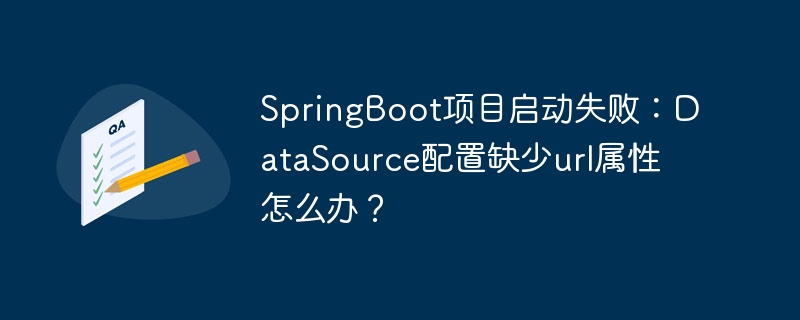golang加密解密報錯通常由密鑰、iv或填充模式不匹配引起,解決方法包括:1. 仔細閱讀錯誤信息以定位問題;2. 檢查密鑰和iv的長度是否符合算法要求并在加解密中保持一致;3. 確保使用相同的填充模式如pkcs7;4. 正確處理返回的錯誤信息;5. 推薦使用aes-gcm等認證加密模式以增強安全性。此外,golang支持多種加密算法,如aes、rsa、sha-256等,生成安全隨機數應使用crypto/rand包,而密碼安全存儲則需結合鹽值進行哈希處理。

Golang加密解密報錯,通常意味著你的代碼在處理密鑰、數據格式或加密算法本身時出現了問題。理解錯誤信息、檢查密鑰和初始化向量(IV)、選擇合適的填充模式,以及正確處理錯誤,是解決這類問題的關鍵。

解決方案
-
仔細閱讀錯誤信息: 這是解決任何問題的首要步驟。Golang的crypto包通常會提供較為詳細的錯誤信息,例如“invalid padding”、“cipher: message authentication failed”等。這些信息直接指向了問題的根源。

-
檢查密鑰和IV: 密鑰和IV的長度必須與所選加密算法的要求相符。例如,AES-128需要16字節的密鑰,AES-192需要24字節,AES-256需要32字節。IV的長度通常是16字節(對于CBC模式)。確保你使用的密鑰和IV是從安全源生成的,并且在加密和解密過程中保持一致。
立即學習“go語言免費學習筆記(深入)”;

-
選擇合適的填充模式: 對于塊加密算法(如AES),如果明文長度不是塊大小的整數倍,就需要進行填充。常用的填充模式有PKCS7和ISO10126。確保加密和解密使用相同的填充模式。如果錯誤信息提示“invalid padding”,很可能是填充模式不匹配或填充數據損壞。
-
處理錯誤: Golang的加密函數通常會返回錯誤。務必檢查這些錯誤,并采取適當的措施。例如,如果cipher.Block.Encrypt或cipher.Block.Decrypt返回錯誤,說明加密或解密過程中發生了問題。
-
考慮使用GCM模式: Galois/Counter Mode (GCM) 是一種認證加密模式,它同時提供保密性和完整性。GCM模式可以檢測到數據是否被篡改。如果你的應用需要高安全性,建議使用GCM模式。
-
示例代碼: 以下是一個使用AES-GCM加密和解密的示例代碼:
package main import ( "crypto/aes" "crypto/cipher" "crypto/rand" "encoding/hex" "fmt" "io" "log" ) func main() { key := []byte("thisisatestkey1234567890") // 256-bit key plaintext := []byte("This is some plaintext data.") ciphertext, err := encrypt(key, plaintext) if err != nil { log.Fatal(err) } fmt.Printf("Ciphertext: %xn", ciphertext) decryptedtext, err := decrypt(key, ciphertext) if err != nil { log.Fatal(err) } fmt.Printf("Decrypted: %sn", decryptedtext) } func encrypt(key, plaintext []byte) ([]byte, error) { block, err := aes.NewCipher(key) if err != nil { return nil, err } aesGCM, err := cipher.NewGCM(block) if err != nil { return nil, err } nonce := make([]byte, aesGCM.NonceSize()) if _, err = io.ReadFull(rand.Reader, nonce); err != nil { return nil, err } ciphertext := aesGCM.Seal(nonce, nonce, plaintext, nil) return ciphertext, nil } func decrypt(key, ciphertext []byte) ([]byte, error) { block, err := aes.NewCipher(key) if err != nil { return nil, err } aesGCM, err := cipher.NewGCM(block) if err != nil { return nil, err } nonceSize := aesGCM.NonceSize() nonce, ciphertext := ciphertext[:nonceSize], ciphertext[nonceSize:] plaintext, err := aesGCM.Open(nil, nonce, ciphertext, nil) if err != nil { return nil, err } return plaintext, nil }
Golang中常見的加密算法有哪些?
Golang的crypto包提供了多種加密算法的實現,涵蓋對稱加密、非對稱加密和哈希算法。對稱加密算法包括AES、DES、Triple DES等,非對稱加密算法包括RSA、DSA、ECDSA等,哈希算法包括MD5、SHA-1、SHA-256、SHA-512等。選擇哪種算法取決于你的具體需求,例如,AES通常用于數據加密,RSA用于密鑰交換和數字簽名,SHA-256用于數據完整性校驗。
如何在Golang中生成安全的隨機數用于加密?
使用crypto/rand包的Read函數可以生成安全的隨機數。這個函數從操作系統的安全隨機數源讀取數據,保證生成的隨機數具有足夠的熵。例如,要生成一個16字節的隨機數,可以使用以下代碼:
package main import ( "crypto/rand" "fmt" "io" "log" ) func main() { key := make([]byte, 16) _, err := io.ReadFull(rand.Reader, key) if err != nil { log.Fatal(err) } fmt.Printf("%xn", key) }
Golang中如何進行哈希運算并進行安全存儲?
使用crypto包中的哈希函數可以計算數據的哈希值。為了安全存儲密碼等敏感數據,應該使用加鹽哈希。加鹽是指在哈希之前,向密碼添加一個隨機字符串(鹽)。這可以防止彩虹表攻擊。以下是一個使用SHA-256和鹽進行哈希的示例代碼:
package main import ( "crypto/rand" "crypto/sha256" "encoding/hex" "fmt" "io" "log" ) func main() { password := "mysecretpassword" salt := make([]byte, 16) _, err := io.ReadFull(rand.Reader, salt) if err != nil { log.Fatal(err) } hashedPassword := hashPassword(password, salt) fmt.Printf("Salt: %xn", salt) fmt.Printf("Hashed Password: %sn", hashedPassword) } func hashPassword(password string, salt []byte) string { hash := sha256.New() hash.Write(salt) hash.Write([]byte(password)) hashed := hash.Sum(nil) return hex.EncodeToString(hashed) }
存儲時,需要同時存儲鹽和哈希后的密碼。驗證密碼時,使用相同的鹽對用戶輸入的密碼進行哈希,然后與存儲的哈希值進行比較。



















